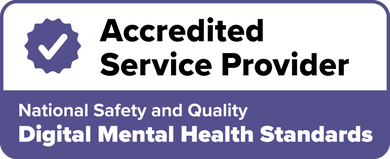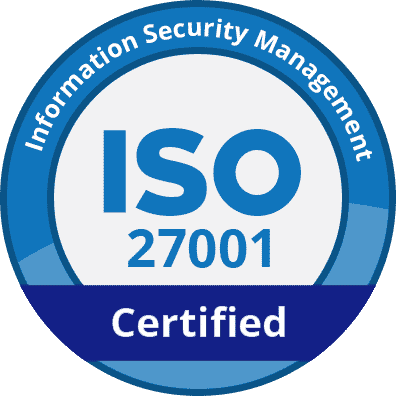ADHD paralysis: How to stop the freeze & get things done
In a Nutshell
ADHD paralysis happens when the brain is overloaded, making even simple tasks or decisions feel impossible.
It can show up as mental, choice, or task paralysis, and is closely linked to executive dysfunction.
Breaking the freeze is possible with tools like the Pomodoro technique, mindfulness, journaling, exercise, reminders, and professional ADHD support if needed.
From the outside, ADHD paralysis might look like procrastination, but on the inside, it’s a battle between wanting to start and feeling unable to. It’s that frustrated state of being stuck in a mental loop.
This experience is common for many Australians who live with ADHD, those who think they might have ADHD, or care for someone who does. The good news is, there are ways to work with your brain rather than against it. In this article, we’ll look at steps you can take to break the freeze and keep going.
ADHD paralysis explained
ADHD paralysis, sometimes called ADHD freeze or ADHD shutdown, is a state of being overwhelmed by a situation or your own thoughts, leaving you stuck in a mental loop and unable to start or complete a task.
This freeze happens because ADHD affects the brain’s executive function, which is the part that helps with focus, organisation, and emotional regulation. When that system is overloaded by information, emotions, or sensory input, it can cause a freeze response.
Although it’s not a medically recognised diagnosis, ADHD paralysis is widely understood as a symptom of ADHD. It can make planning, organising, problem-solving, and following through feel daunting or even impossible. From the outside, it might look like laziness, indecision, or apathy, but it’s far more complex than that.
There are different types of ADHD paralysis:
Mental paralysis - It happens when thoughts and emotions become too much to process that it feels like your brain would just rather shut down. For some people, it feels easier to give up than to try to organise what’s in their head and push through the overload.
Choice paralysis - Sometimes called ADHD decision paralysis, it happens when even small decisions feel like big ones. You might find yourself overthinking what to eat for lunch or which email to answer first. Instead of moving forward, the stress builds, and you end up stuck in the decision-making loop.
Task paralysis - It happens when starting, switching, or completing tasks feels impossible. You might avoid the task, zone out, or even end up in hyperfixation on something unrelated. Sometimes you get halfway through and freeze, or struggle to pick it back up after an interruption.
People often wonder about the difference between ADHD paralysis and executive dysfunction. While ADHD paralysis describes the “freeze” or stuck feeling when you can’t start or finish a task, executive dysfunction is the underlying difficulty in organising, prioritising, and regulating actions.
Paralysis can be seen as one way executive dysfunction shows up in daily life.
How to get out of ADHD paralysis?
Breaking free from that frozen state isn’t about pushing harder, but it’s about giving your brain the right tools and strategies so it can work with you, not against you.
Whether or not you have a formal diagnosis, here are some practical steps you can try to get out of ADHD paralysis:
1. Use the Pomodoro technique
If getting started feels overwhelming, try breaking the work into smaller, timed chunks. You can try the Pomodoro technique where you’ll focus for 25 minutes, then have a quick 5-minute break. After four rounds, you can give yourself a longer 15-20 minute break to rest your brain.
Having a set structure like this removes the pressure of working “until it’s done” and can make it easier to get started. Many people find that this approach can boost mood and productivity because the breaks are built in and not self-regulated.
2. Practice mindfulness
Mindfulness is about paying attention to the present moment. This might mean focusing on your breathing, noticing how your body feels, or following a short guided meditation.
It can help reduce stress and improve emotional balance, making it easier to move through tasks and ease some of the challenges around ADHD and decision-making, without getting stuck in overthinking. Even practicing mindfulness for a few minutes a day can make a difference for those struggling with ADHD paralysis.
3. Keep a journal
If you feel overwhelmed by all the thoughts that’s running in your head, a journal might help you out. You can use it to write down ideas, plans, or anything that’s on your mind to reduce the mental load that often contributes to paralysis.
Use a journal that’s inspiring for you to write on, whether that’s a notebook or a digital one like Talked’s in-app journal. Writing and brain dumping not only help pull you out of your ADHD paralysis, but they can also help process those emotions that are hard for you to say out loud.
4. Move your body
Exercise changes brain chemistry in ways that can support attention and motivation, similar to the effects of certain ADHD medications. Activities like running, swimming, dancing, weight training, or martial arts can improve your focus, mood, and energy.
5. Use external reminders
You can use a wall calendar, a whiteboard, or an app to have a clear visual record, organise your thoughts, and reduce mental clutter.
Lists, spreadsheets, or habit trackers can also be useful for keeping on top of your daily tasks. For example, setting a daily reminder to water your plants might seem minor, but without it, they could easily be forgotten.
When nothing seems to work
Regularly experiencing ADHD paralysis can take a toll on your mental and emotional health. It may bring anxiety at times, like that feeling that you’re forgetting something important, but you can’t really recall what it is.
Others may start to doubt their skill or believe they’re always falling short, which can contribute to depression.
If you keep on missing school or work deadlines or finding even small decisions mentally exhausting, it may be time to reach out for help. You don’t have to wait for an official ADHD diagnosis to speak with a therapist or an ADHD coach. They can work with you to develop strategies for managing symptoms and slowly break you out of paralysis.
For those seeking a formal diagnosis, ADHD assessment usually costs around $250-$2,500. Talked can help you find registered psychologists experienced in ADHD who can guide you through the process.
For employees, it’s also worth checking if your workplace offers an Employee Assistance Program (EAP). A lot of companies already offer this kind of support, and sometimes through services like Talked’s Beyond EAP.
That means you could get free access to Australian-registered ADHD therapists, psychologists, and counsellors online without the hassle of trying to fit it into a busy schedule.
Final thoughts
When ADHD paralysis sets in, it can feel like ADHD is ruining your life. But what’s really happening is your brain’s way of trying to cope with overload, which is why even the smallest tasks can feel so heavy. The good news is that being stuck doesn’t have to last long, as long as you have the right tools and support in place.
And if things still feel too heavy to manage on your own, professional ADHD counselling or therapy can make a huge difference. Services like Talked’s free introductory therapy session make it a little easier to take that first step without feeling overwhelmed.
References:
Attention Deficit Disorder Association. (2025). ADHD paralysis in real life. Retrieved from https://add.org/adhd-paralysis/
Biwer, F., Wiradhany, W., Oude Egbrink, M. G. A., & de Bruin, A. B. H. (2023). Understanding effort regulation: Comparing 'Pomodoro' breaks and self-regulated breaks. The British journal of educational psychology, 93 Suppl 2, 353–367. https://doi.org/10.1111/bjep.12593
Goldstein, E., Topitzes, J., Brown, R. L., & Barrett, B. (2020). Mediational pathways of meditation and exercise on mental health and perceived stress: A randomized controlled trial. Journal of health psychology, 25(12), 1816–1830. https://doi.org/10.1177/1359105318772608
Hotte-Meunier, A., Sarraf, L., Bougeard, A., Bernier, F., Voyer, C., Deng, J., El Asmar, S., Stamate, A. N., Corbière, M., Villotti, P., & Sauvé, G. (2024). Strengths and challenges to embrace attention-deficit/hyperactivity disorder in employment - A systematic review. Neurodiversity, 2. https://doi.org/10.1177/27546330241287655
Lara, M. (2018).m The exercise prescription. Retrieved from Children and Adults with Attention-Deficit/Hyperactivity Disorder (CHADD) website: https://chadd.org/wp-content/uploads/2018/06/ATTN_06_12_Exercise.pdf
National Institute of Mental Health. (2024). Attention-deficit/hyperactivity disorder (ADHD). Retrieved from https://www.nimh.nih.gov/health/topics/attention-deficit-hyperactivity-disorder-adhd
Get Support
Overcome your adhd and book a free video consultation with one of our therapists
Essential Reading about ADHD
ADHD Therapists Available Now
NSW
Psychologist
Hi, my name is Jimmy and I've been practising for about 7 years. I have worked almost my entire career in private practice, but before that I worked at Headspace and as R...More
VIC
Psychologist
Hi, I am Melissa, a trauma-informed psychologist with experience supporting individuals through mental health challenges, trauma, and managing neurodiversity. My approach...More
VIC
Clinical Psychologist
Hi, I'm Adriana, a psychologist with extensive experience working with diverse clients. I offer both brief solutions-focused support and longer-term evidence-based treatm...More








